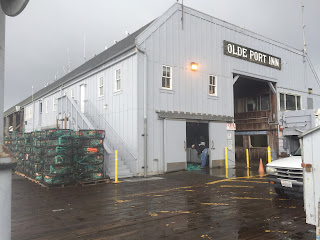My Pacific Coast Railway presently has four locomotives. Each is either a Bachman or Broadway Limited Imports On30 ready to run model to representing a particular prototype locomotive. I did not modify the locomotives to have the precise prototype boiler profile, shape and position of domes, etc. as the construction of both the Bachman and MMI models does not lend itself easily to this as the dome bases are cast as part of the metal boiler. However, brake hoses and crews were added to all locomotives as well as the period correct lettering and numbers. I prepared my own artwork in an MSWord document and had decals printed by Joshua Muma of Bedlam Creations (www.bedlamcreations.com, He is responsive, provides a high quality product, and will do art work for you if desired). I toned down the shiny bare metal of side rods and valve gear with Neolube. Some locomotive specific details were fabricated and/or changed as described in the following paragraphs.
#101
Locomotive #101 was 2-6-0 Mogul built by Baldwin in 1893, had a tractive effort of 10,000 lbs, and served the PCRwy until the locomotive was scrapped in 1924. The drawings and only photos of #101 show it with a large rectangular oil headlight and other appliances typical of its construction date.
I wanted my locomotive to appear more modern with changes that may have been made near the end of its career. My model is a Bachman 2-6-0, which had a large cantilevered Colorado & Southern style headlight bracket and silver smoke box. I substituted the boiler and cab assembly from a Bachman 0-6-0 with its more modern cab, headlight and bracket, and graphite-colored smokebox. I also fabricated a locomotive foot plate from styrene and a tender oil bunker using a styrene wrapper laminated over a wood block base and detailed with Micro-Mark rivet decals.
This locomotive is my San Luis Obispo yard switcher.
#105
Locomotive #105 was typical of a series of 2-8-0 Consolidations (#s105-109) built by Baldwin in 1904-1906 for the PCRwy. They all had a tractive effort of 19,340 lbs. #105 served the PCRwy until it was sold for scrap in 1943.
My model is based on a Broadway Limited Imports Denver & Rio Grande Wester C-16. My model-specific changes included removing the over-sized BLI dummy front coupler, modifying the pilot to accommodate a Kadee #26 coupler and fabricating a tender oil bunker using a styrene wrapper laminated over a wood block base and detailed with Micro-Mark rivet decals.
I typically use #105 as the road engine for the Daily Mixed Train Turn between San Luis Obispo and Port San Luis.
#110 and #111
Engine #s110 and 111 were 4-6-0 Ten Wheelers built by Baldwin in 1910 and 1911and both had a tractive effort of 17,800 lbs. They were acquired by the PCRwy from the Nevada-California-Oregon Railway in 1928. Engine #s110 and 111 did not overlap with #101 in their service time on the PCRwy, but they do on my railroad. #111 was sold to the Oahu Railway in 1942. #110 served the PCRwy until the end of operations in 1943 and was sold for scrap in 1948.
#110 and #111 serve as road engines for Passenger Trains, Mail Express Trains, and the Daily Freight Train Turn between San Luis Obispo and Santa Maria.
Till Next Time
Future installments will cover, in no particular order, passenger cars, freight cars, operations, and expansion of the line to Santa Maria.
Thanks for reading and please give me your comments!
































